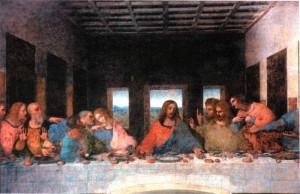Eating Liberally asks Marion: Is stealth the way to healthy eating for kids?
Every now and then, Kerry Trueman tosses a “Let’s Ask Marion” question at me, and these are invariably a challenge. Today’s: “Is stealth the way to healthy eating for kids?”
(With a click of her mouse, Eating Liberally’s Kerry Trueman, aka kat, corners Dr. Marion Nestle, NYU professor of nutrition and author of Feed Your Pet Right, Pet Food Politics, What to Eat, Food Politics, and Safe Food):
KT: NPR’s Morning Edition ran a story today about “stealth” strategies that some schools and researchers are employing to get kids to eat healthier foods–for example, by sneaking pureed vegetables into a line of cafeteria foods being marketed under the name “Hidden Healthies.”
But doesn’t this approach reinforce the perception kids have that vegetables taste lousy? David Just, co-director of the Cornell Center for Behavioral Economics in Child Nutrition, pointed out that “Taste is a suggestion more than anything else. If you think something is going to taste really good — if you’ve been told by others that it tastes good — you build that into your head when you eat it.”
A researcher who’s experimenting with enhanced cafeteria lighting to make healthy foods appear more appealing to kids told NPR, “We got to figure out some things so that the last thing in the world they know is that we’re trying to get them to eat well.”
We know that kids (and plenty of grown-ups!) turn up their noses at foods that are presented to them as healthy. Kids have also come to expect that their preferences should be catered to, which is why carrot and apple growers have begun packaging their products to resemble snack foods like potato chips.
In short, veggies have a serious pr problem. Do these strategies strike you as a good solution?
Dr. Nestle: Oh no! Not stealth again. I thought we were done with that in 2007 when we had to live through the plagiarism fight between Jessica Seinfeld’s Deceptively Delicious, and Missy Lapine’s Sneaky Chef, both of them pushing stealth strategies.
I remember being given hamburgers as a kid and how betrayed and condescended to I felt when they turned out to contain ground spinach—a vegetable I detested at the time but now think is terrific, especially when young and tender. Kids’ tastes do change, and should be encouraged in an honest way.
That is why I am so intrigued by the approach shown in the New York Times “Lunch Line Redesign” op-ed last week. Check out the way that Brian Wansink and his colleagues suggest redesigning lunch lines. These do nothing draconian or deceitful. Instead, they gently nudge kids to made healthier choices on their own.
How? By doing such things as putting salads near the cash register, using bowls instead of trays, and describing the foods more attractively. My favorite of these strategies is simply to ask the kids whether they would like a salad. All of these increase kids’ selection of healthier food choices.
But will the kids eat the foods? Of course they will. From my observations of school meals, the single most important indicator of whether the kids are eating healthfully is if the school food service people know their names and talk to them about what they are choosing. It helps a lot if the food tastes good, but kids respond to adults who care about what they eat.
When I hear parents say that the kids won’t eat anything healthy, I suspect that I’m talking to someone who isn’t willing to take adult responsibility for what kids eat and finds it easier to be stealthy than direct. Kids need to trust the adults in their lives and food should be used to instill trust, not destroy it.
This exchange appeared on the Huffington Post website on October 25 and elicited a response from Missy Chase Lapine, the original Sneaky Chef herself (reproduced with permission):
Dear Dr. Nestle,
I understand you had a bad experience with sneaky spinach as a child, but I respectfully disagree with your position that sneaking healthy food in kids’ meals is a bad idea. As the author of the Sneaky Chef cookbooks, I receive thousands of testimonials from parents to the contrary. They are thrilled that their kids are finally eating veggies–and most of the kids are in on the secret and love it.
The reason sneaking is needed is highlighted in the recent CDC report showing that all of the efforts and billions of dollars spent on nutrition education has failed. Everyone now knows that they SHOULD eat their veggies. The problem is HOW to get them to do it. Teaching alone is conclusively insufficient–we need to sneak and teach. They work hand in hand.
Sneaking veggies gives people an easy way to experience the benefits of eating veggies, yet lets them enjoy their favorite foods, like spaghetti and meatballs–-only now they’re loaded with spinach, broccoli, peas, wheat germ and cauliflower. This direct experience opens the door to learning.
Parents from around the world write me letters like this:
“Every time I use one of your healthy (and sneaky) tips or wonderful recipes, I just want to scream with joy because they eat it.” –Mindi B., TX
The bottom line is: combining “sneaking and teaching” works for everyone.
Respectfully,
Missy Chase Lapine, The Sneaky Chef
Not exactly everyone, if I may respectfully submit. But I’m glad she wrote. OK, readers: opinions, please!


